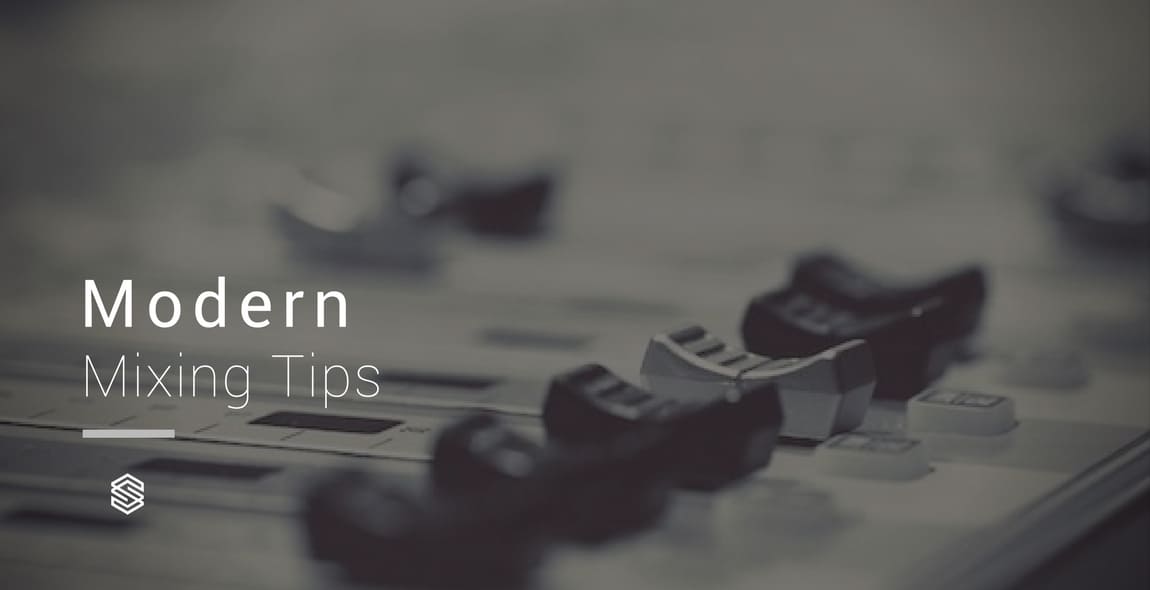
You’ve finally gotten your musical idea down and refined it into something you are proud of, but something is missing.
It doesn’t quite have the impact and depth that your favorite songs do.
It all comes down to mixing, which can make or break your track.
With this mixing series, we are here to help you get your ideas polished and ready for mastering with these easily digestible mixing tips!
1. Phasing Issues
Modern dance music requires stereo expansion on key elements to stay competitive with the current mixing standard, whether it be using the ever popular Haas Effect (Stereo imaging trick discussed in layering of sounds section), or using a stereo spreader like Izotope’s Imager.
When your track is played back in stereo with stereo enhancers on, the mix might sound great, but when it is collapsed into mono, more often than not, there are phasing issues.
This can be a big problem as your tracks will be played out on bigger sound systems that usually convert the signal into mono and your track will lose it’s power and punch if you have phasing issues when converted.
A simple, but highly useful trick for avoiding phasing issues when stereo widening is to pan your source hard left and hard right and pitch them a couple of cents apart.

Here we used Apple’s pitching plugin on the hard right and hard left panned channels and slightly detuned them by +- 13 cents to avoid phasing issues when the signal is collapsed to mono
2. Stereo Spreading over Panning
Your aggressive dance music does not need crazy panning which distracts from the main element.
This does not mean that you shouldn’t pan your elements. The next time you needing to make a panning decision, try out stereo spreading first.
For example, try stereo spreading your hats and percussion.
By listening to the two clips you can hear that the spread drum loop sounds much fuller bodied than the loop without.
3. Create Controllable Depth
Creating depth in your mix is important to a professional sound.
A quick way to add depth to your basses and leads is to have a mono signal and add a delayed and reverberated stereo copy.
Then further process with EQing and FX such as distortion.

For our depth layer on our lead, we decided to put a delay on at 100% as we already have a dry channel. Then we followed it up with a chorus and reverb for add space. Lastly we put on an OTT (Over The Top Compression) to bring out our the detail of our depth layer and an EQ to take out some mud.
4. Boost Smart
When you are boosting on frequencies on your EQ, boost within the notes of your song’s key to gel your song together.
Use This Chart so you know exactly the frequencies to boost that are in your key.

Many of todays EQ’s have a piano roll so you can EQ within the notes of your songs key and here we choose to use Pro Q 2 and dipped and boosted in key.
5. Monitor Your Low End
Getting a clear picture of what’s going on in your low end can be difficult.
Put a low pass filter on your master channel and turn it on when mixing to see how your bass, kick drum, and sub interact with each other.
This will help isolate the low end frequencies and you will be able to make accurate adjustments without the high end of your track distracting you.
6. Subtle Coloring
To provide greater depth and separation in your sounds, try panning an instrument hard left and right and process the two channels separately.
Putting on modulation FX like choruses and phasers work well. Subtle processing works great here.
7. Panning Positions
The human ear can only perceive a limited number of panning positions at once, so keep panning simple.
Use these 5 panning positions to keep your mix clean and increase the separation of your sounds in the mix:
- Mid Right
- Hard Right
- Center
- Mid Left
- Hard Left
8. Separate For Control
Mixing your tracks in frequency split groups can be an effective way to get your tracks to gel together.
Try grouping your instruments into low, mid, and high frequencies.
This kind of multi band like grouping will allow you to push your instruments harder and make more accurate mixing decisions.
9. Mid Range is Everything
The high end and sub of your tracks are important, but the mid range is what gives them their fullness.
If you find some of the elements need a little more mid range, try using a parallel track as an aux or send with distortion and lowering high and low frequencies with a shelf.
Setting this up as a send will help you add more mid range to your sounds while preserving the original tone of your sound.

Here we set up a send channel cutting out the low end and taming the highs. We followed that up with a saturator and a multi-band compressor set to OTT to really bring the mid range up to the front of the mix
10. Control Your High End
A good clean and bright high end is desired when mixing, but too bright could leave the mix sounding harsh and unnatural. Tame your synths and hats with multi band compression, tape saturation, or bit crushing.




